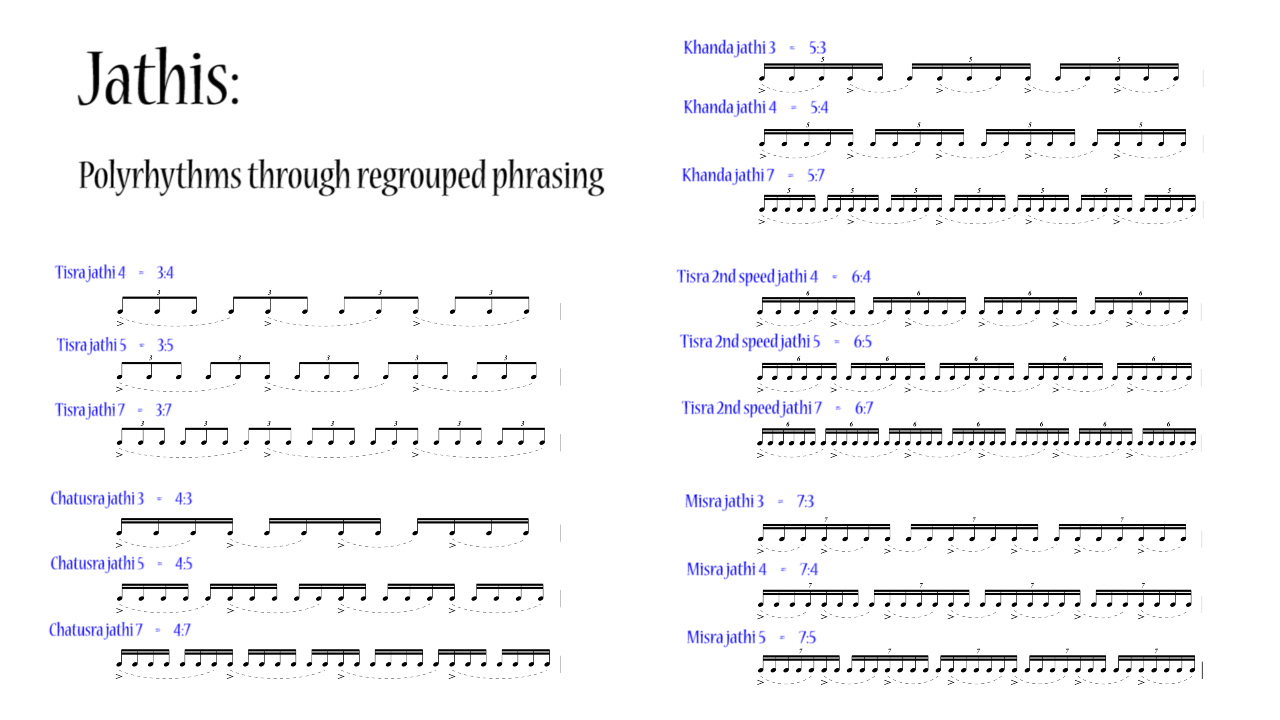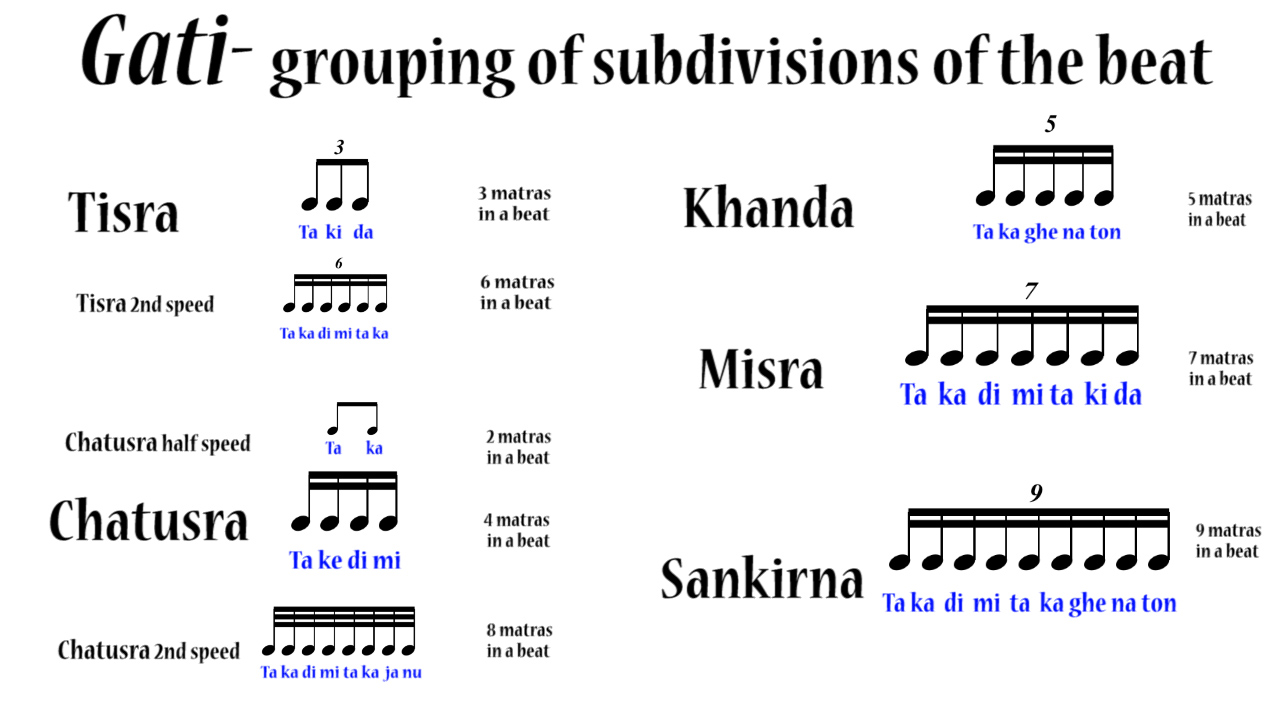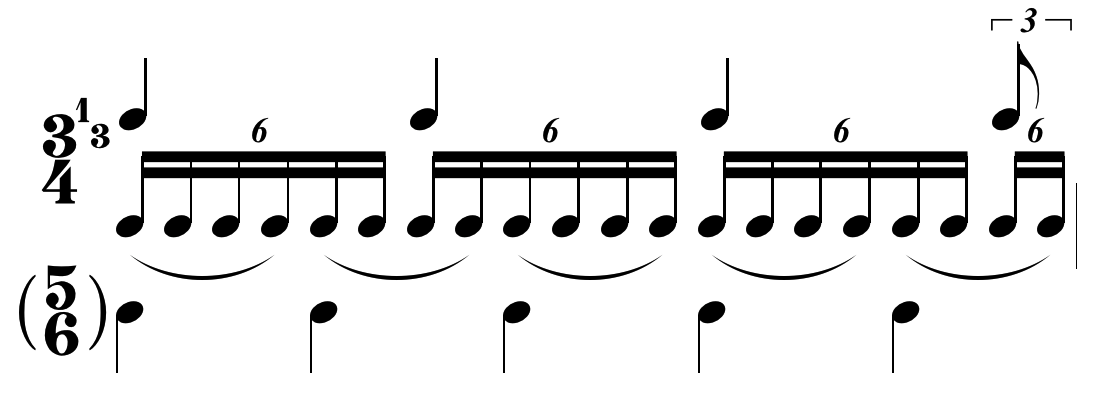In the last lesson we worked on phrasing the gatis within each beat. This lesson is going to build on the gati system through rephrasing, called jathi. In a jathi we’ll be using the speed of one gati, but phrasing using another. For example we’ll take the Chatusra gati, which is four subdivisions to the beat, but phrase it using Tisra, in threes, but keeping the Chatusra speed. In Western terms, we’ll take sixteenth notes, but rather than phrasing them as four to the beat, we’ll accent every third sixteenth note.
I’ve decided to start a series of video lessons teaching the application of Karnatic rhythmical techniques to Western music. I want to discuss, over a series of lessons, some of the most practical elements that we can take from using these techniques, which help in complex rhythmical music that we see in Western music. These lessons will deal with things such as odd subdivisions of a beat like quintuplets and septuplets, odd meters like 5/8, 7/8, 11/8 or even more complex like 18/16, polyrhythms, polymeters, polypulses, tuplet ratios, embedded tuplets, and irrational rhythms.
Recently a friend posted a photo on Facebook of a bar of music she encountered and wasn’t sure how to count it. It was a bar of 4/6, and later in the discussion she posted another one of 5/6. How does one actually count a 4/6 or 5/6 bar?



